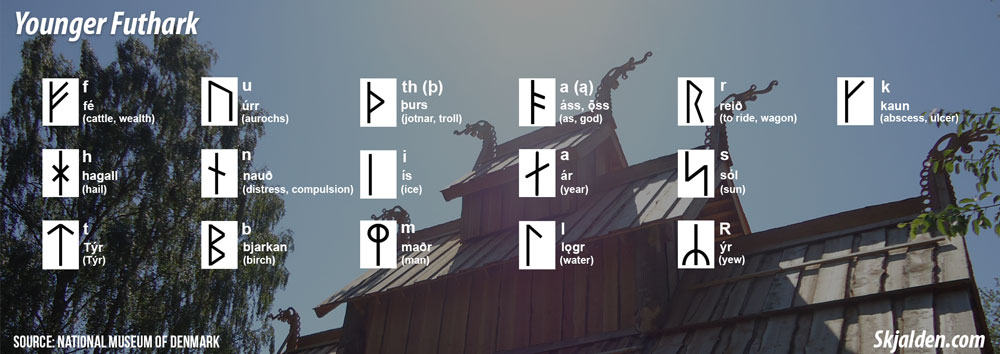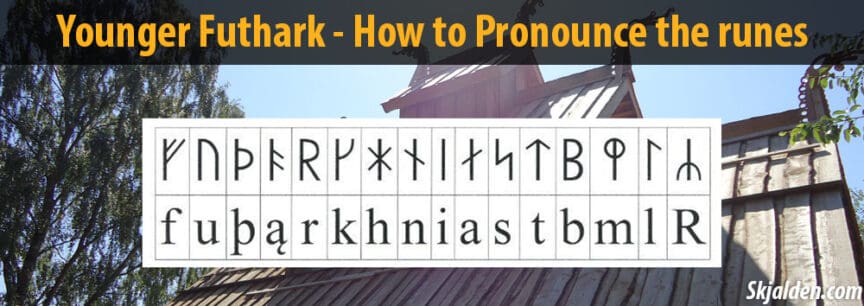The runic alphabet that was used during the Viking Age is called Younger Futhark. These runes can be found on hundreds of runestones throughout Scandinavia. This alphabet does not consist of many runes, and that is because the Norse language evolved a lot during the Iron Age, which meant that the runic alphabet was reduced from 24 to 16 runes.
Each rune has its own name and sound. Some of the runes are used to spell the same letter, for instance, the Týr rune is used for the letters “t” and “d”, and kaun is used for “g” and “k”.
List of the Younger Futhark Runes
The names on this list of Younger Futhark runes have been taken from the website of The National Museum in Copenhagen. The names of the runes may vary slightly depending on the language and on which runologist has conducted the research.
| Name | Rune | Meaning |
|---|---|---|
| fé | ᚠ | cattle, wealth |
| úrr | ᚢ | aurochs |
| þurs | ᚦ | jotnar, troll |
| áss | ᚭ | as, god |
| reið | ᚱ | to ride, wagon |
| kaun | ᚴ | abscess, ulcer |
| hagall | ᚼ, ᚽ | hail (precipitation) |
| nauð | ᚾ, ᚿ | distress, compulsion |
| ís | ᛁ | ice |
| ár | ᛅ, ᛆ | year |
| sól | ᛋ | sun |
| Týr | ᛏ, ᛐ | Týr |
| bjarkan | ᛒ | birch |
| maðr | ᛙ, ᛘ | man |
| lǫgr | ᛚ | water |
| ýr | ᛦ | yew |
The runic alphabet that was used during the Iron Age is called Elder Futhark, these runes are often confused with Younger Futhark.

Dr. Jackson Crawford is an expert in Norse mythology and Old Norse. In this video, he pronounces each of the runes from the runic alphabet Younger Futhark in both Old Norse and Icelandic.
These runes are not really optimal for writing in English, or any other languages. They were designed to write Old Norse and not any other language. Because of this, it can be difficult to write words in English, and, therefore, people often decide to use the runes from the Iron Age instead.
